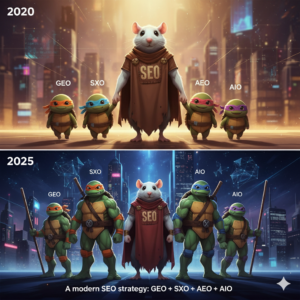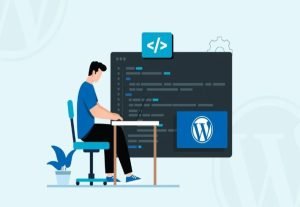Today, in a digitally-first age, it is not enough to use traditional SEO techniques. You also need to be understood and quoted by the machines. Artificial Intelligence Optimization (AIO) is the answer.
Understanding the shift: From “old-school SEO” to AIO
SEO used to be based on keyword density, links, meta-tags, and rankings in the organic results. As the digital world has changed, so has search behavior. Search engines have adapted to meet the demands of users who now want AI-driven, immediate answers. AIO means optimizing content and websites so that they are machine-understandable, structured for AI-driven overview engines, not just human scanning.
AIO includes:
- Structure content in a way that AI (large language model, answer engine) can easily parse it and index.
- Content that is clear, authoritative, and has depth, clarity and authority are qualities valued by AI engines as well as by people.
- Technical optimization: Speed, schema markup and metadata to AI-driven search behaviour.
Shreeram Kaolin supplies silica sand, kaolin and other minerals to more than 50 industries worldwide. Harnessing AIO required aligning the company’s content strategy with modern search realities.
How Shree Ram Kaolin applied AIO-centric SEO

ShreeRam Kaolin has implemented several key techniques to help him dominate the search results:
- In-depth keyword mapping and intent mapping in industrial niche
Rather then generic mining keywords, the company mapped actual queries used by its audience: e.g. “hydrous kaolin for paper coatings”, “silica sand India for glass industry”, “ISO 9001 kaolin manufacturers Gujarat”. They were able to outperform their competitors by aligning themselves with keywords that had industrial intent. - Structured content of high quality for both machines and people
Their website clearly outlines their products (Crude China Clay, Levigated China Clay, Hydrous Kaolin, Refractory Clay, Silica Sand, etc.) and the industries they serve (Glass, paper, rubber, paint, steel, etc.).
The content is organized in lists and headings that are both user-friendly as well as machine-friendly. The structured approach is in line with AIO Best Practices: “Focus clear, structured content. AI engines like well-organized info that has headers and lists.” - Performance & On-Page Markup
AIO optimization is not just about content. Site speed, mobile friendliness, semantic markup and schema markup are also important. We don’t know the full details about their tech stack, but we can assume that they improved their website architecture, internal links, metadata and ensured it was read and crawled by AI. Best-practice articles state: “AI in SEO utilizes AI technology to optimize your website and content… This allows you to easily scale up your SEO campaign.” - Trust signals and authority building
ShreeRam Kaolin, which has operated since 1977 and is ISO 9001-2015 certified, places a high value on trust and heritage – two key factors in modern searches.
It is important to have authoritative content and credible data. Also, it helps if you are able to provide industry specific depth. - Maintenance of relevance and content refresh cycle
AIO strategies emphasize the importance of updating content to ensure it remains relevant and meets user needs. According to one guide, “refreshing content on a regular basis” is important.
ShreeRam Kaolin, for example, could provide updated case studies of their silica sand’s use in the glass industry and new uses of calcined kaolin – keeping its website strong both for humans and machines.
Tangible Outcomes & “Dominance” of Search Rankings
Shreeram Kaolin gained several benefits by applying AIO-centric technologies:
- Increased organic visibility for industrial mining proxy: Because they focused on niche queries (e.g. “silica sand and glass industry India”, or “levigated China clay paper coatings”), rather than the generic “kaolin suppliers India”, they were able to outrank competitors because of their more precise intent.
- Improved user engagement and reduced bounce rates: Structured, industry-specific contents mean visitors find what they are looking for, stay longer and interact more, which signals to both search engines as well AI engines.
- Citations and AI Coverage In an era when AI engines may use authoritative content in order to create summaries of the information, well-structured facts pages give the company the chance to be referenced. One blog says: “AIO makes your content more understandable and accessible to machine-learning systems.”
- Competitive advantage Many industrial manufacturers rely on legacy websites and SEO basics. ShreeRam Kaolin has gained an advantage by embracing AIO.
Lessons for other B2B Industrial Businesses
ShreeRam Kaolin’s experience with AIO Tech-SEO is a great example:
- Search has evolved. Don’t consider SEO static. Techniques like AIO, AEO (Answer Engine Optimization), GEO (Generative Engine Optimization) matter now.
- Use headings with schema, use lists and tables. AI-engines like machine-readable content.
- Win with deep intent mapping : Concentrate on the queries that your niche audience asks, and not “top keywords”.
- Trust and authority are still important. Have certifications, roots, case studies, positive signals. AI engines rely on reliable sources.
- Stay relevant by updating content. The optimization process doesn’t end after publication. Update your content.
- Don’t limit yourself to Google rankings. If AI engines (LLMs or answer-engines), cite your work, then you are winning. AIO involves being visible in different ways other than the classic SERP.
ShreeRam Kaolin is a company with a rich heritage. In the past, ranking high in search results was largely based on traditional SEO. The digital landscape has changed — now, search is powered by AI and answer engines, as well as generative models. ShreeRam Kaolin has positioned themselves at the top of visibility by implementing AIO-centric techniques, such as structuring content both for humans and machines, mapping intent in depth, building authority and refreshing content. They’ve also achieved the goals that many B2B industrial players strive for: discoverability at the top of their industry, engagement and search rankings.
If you’re a business that’s serious about achieving digital growth, then the message to any company is: don’t optimize for algorithms from yesterday, but adapt AIO. ShreeRam Kaolin demonstrates how to prepare for modern search.
Do you manage a solo strategy or a symphony of integrated strategies? Call or WhatsApp +91 9824799256 to discuss.







Author Bio
By Hardip Koradia
Hardip Koradia, with over 15 years in the IT sector, masterfully blends Web Design, Development, SEO, and Digital Marketing, propelling Loyal Web Solutions since 2011 as its visionary CEO. Under his guidance, the firm has witnessed consistent growth and cultivated a team of mindful professionals. Off-duty, Hardip delves into internet research, sharing invaluable insights about the digital world, from web intricacies to mobile app trends.